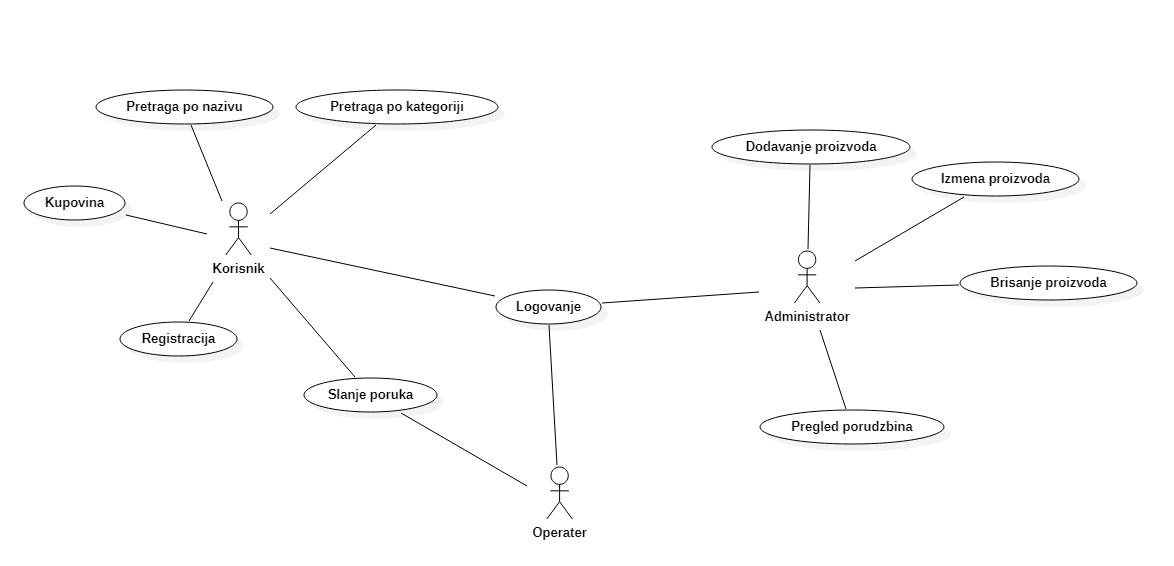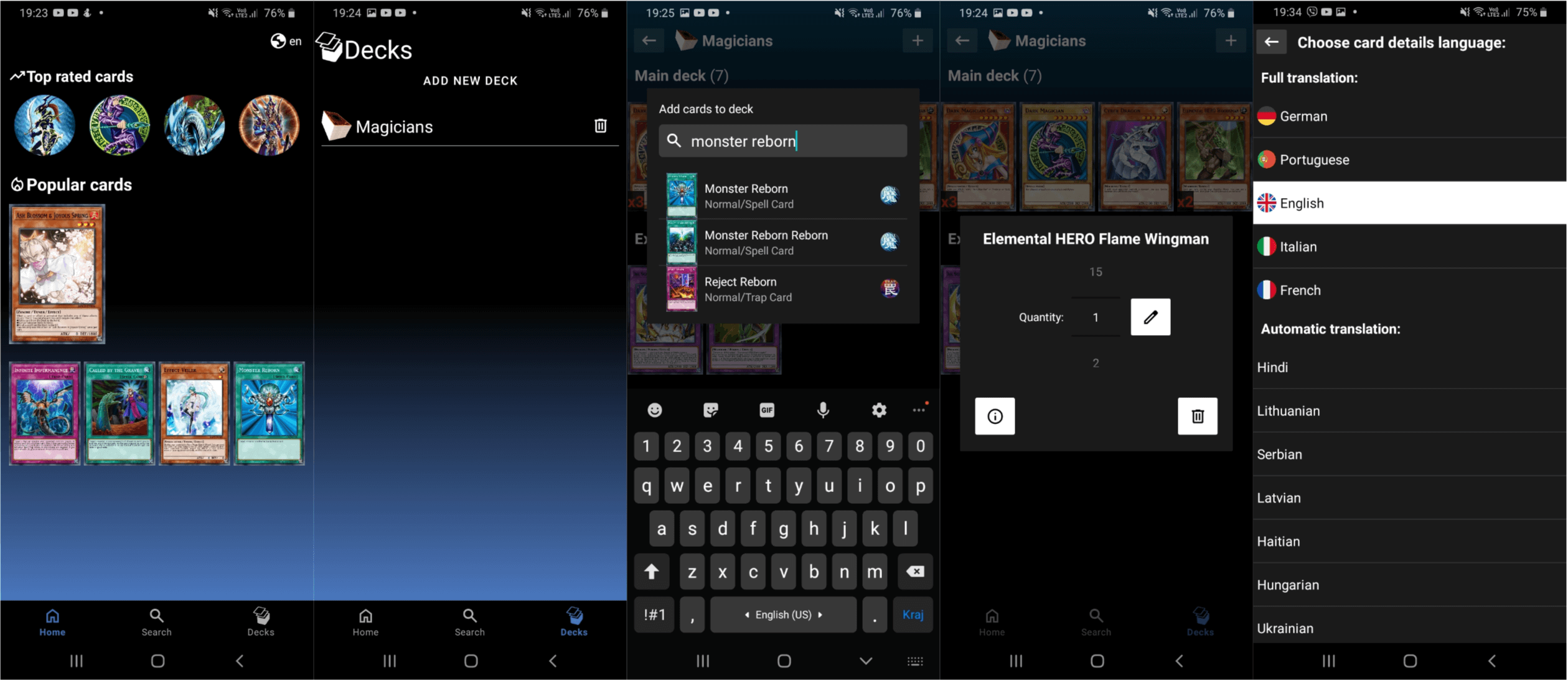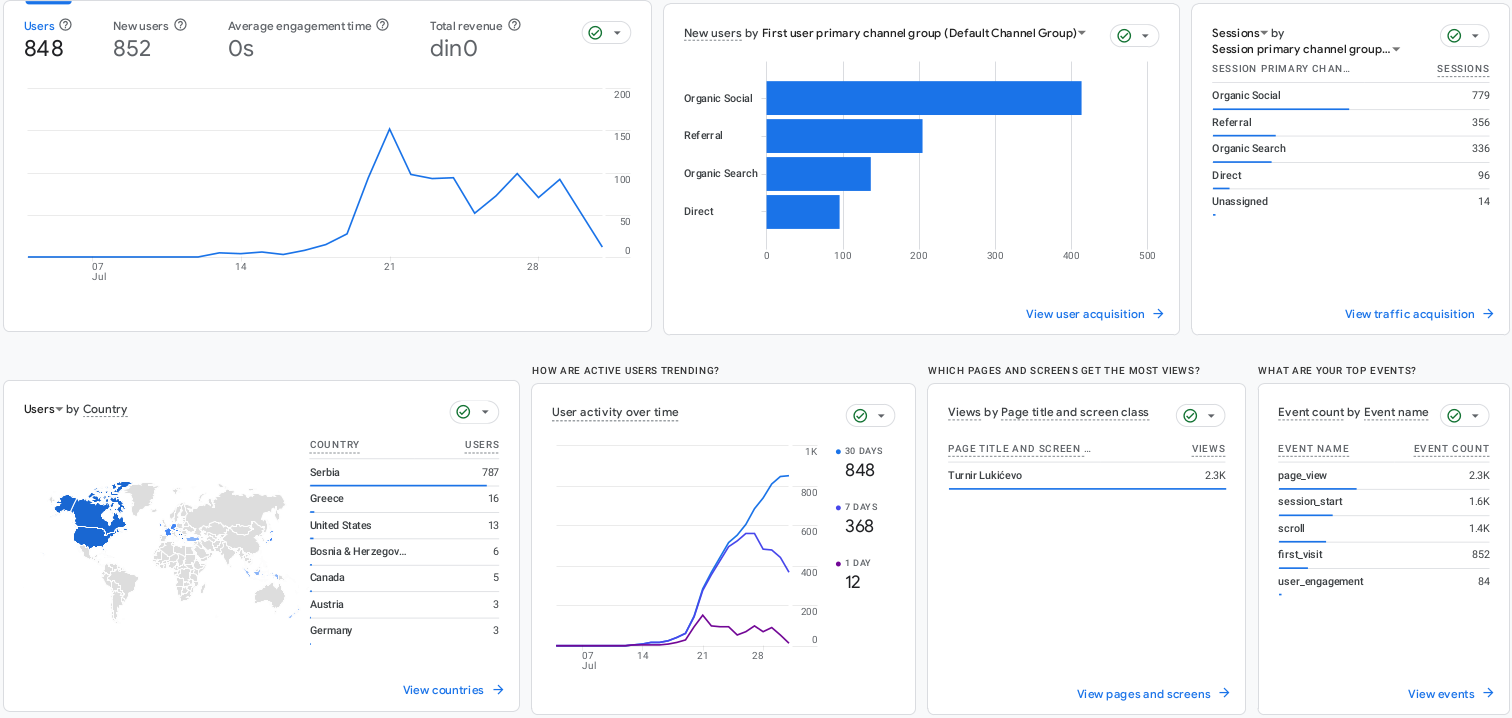Other projects

Web application for purchasing video games
Web application for purchasing video games
 github.com/mekicnikola/VideoGamesShop
github.com/mekicnikola/VideoGamesShop
 C#,
C#, HTML,
 CSS,
CSS, JavaScript,
 SQL Server
SQL Server
Web application for purchasing video games. It was developed in C# programming language in ASP.NET Core MVC framework with communication with SQL Server database. The application code is available at the GitHub location shown above.

Android application to search over 12000 YGO! cards and over 700 card sets

Android application to search over 12000 YGO! cards and over 700 card sets
 play.google.com/store/apps/details?id=com.ygo.hotc
play.google.com/store/apps/details?id=com.ygo.hotc
 Java,
Java,  PHP,
PHP,  MySQL,
MySQL,  SQLite,
SQLite,  Python
Python
Android app to search over 12000 YGO! cards and over 700 card sets, as well as for creating decks. The application was developed in the Java programming language with an SQLite database for creating and storing decks. PHP was used to retrieve the data to create the MySQL database and API. Python was used to write scripts to download over 12000 card images. The app is available for download from the Google Play Store at the web location shown above.
The literal and graphical information presented on this site and Android application about YGO!, including card images, the attribute, level/rank and type symbols, and card text, is copyrighted by 4K Media Inc, a subsidiary of Konami Digital Entertainment, Inc. This website and Android application are not produced by, endorsed by, supported by, or affiliated with 4k Media or Konami Digital Entertainment.

Futsal Tournament Website
Futsal Tournament Website
Webflow
This website is designed to track futsal tournament information, results and rankings. It allows users to keep up to date with match results, team standings and overall tournament progress. The site features real-time updates and a user-friendly interface for seamless navigation and accessibility.
It got 848 users in two weeks with a village population of around 1100.


Instagram Android clone
Instagram Android clone
 github.com/mekicnikola/InstagramComposeClone
github.com/mekicnikola/InstagramComposeClone
Jetpack Compose,
 Kotlin
Kotlin
Instagram app design clone using Jetpack Compose technology








